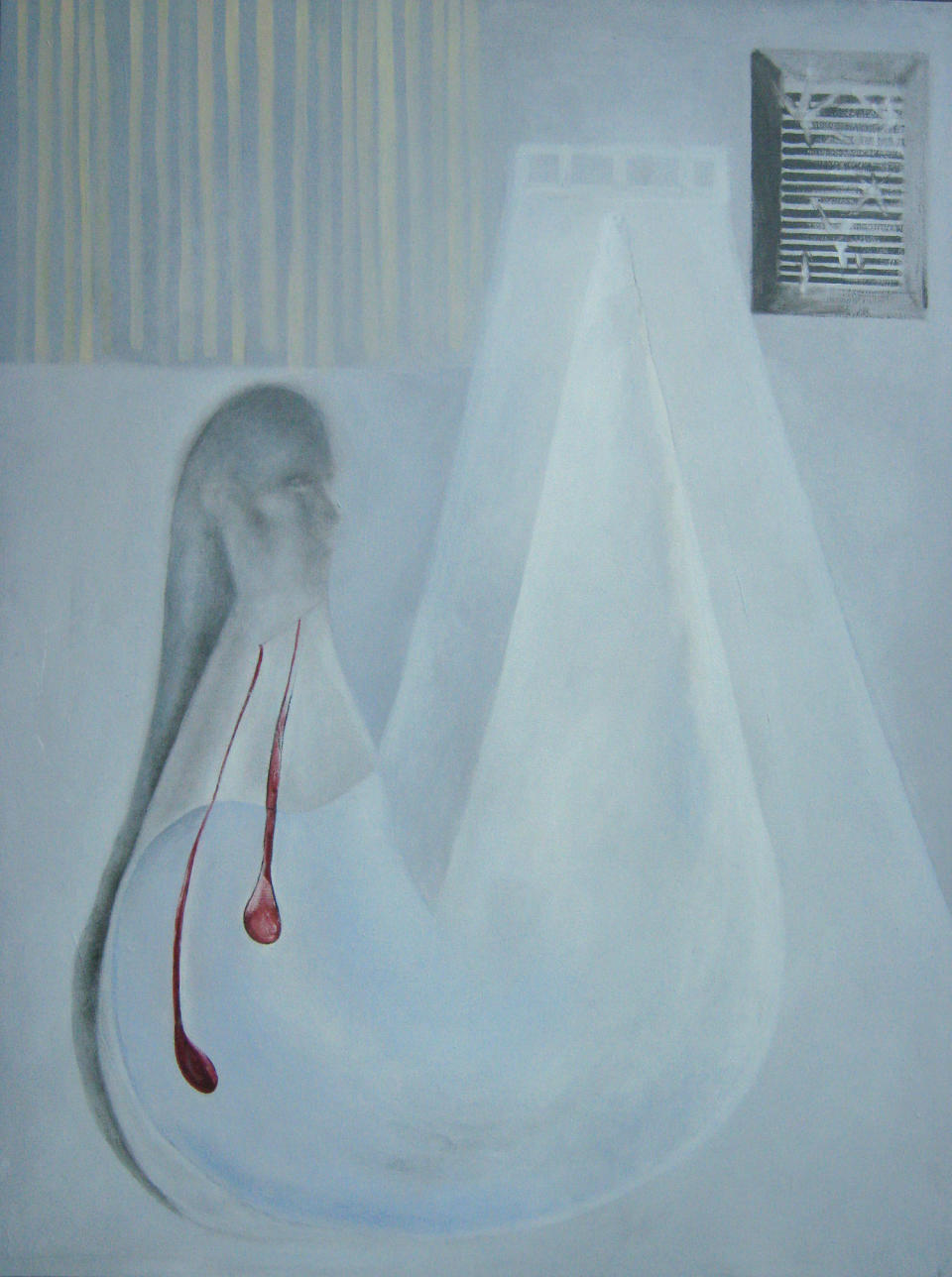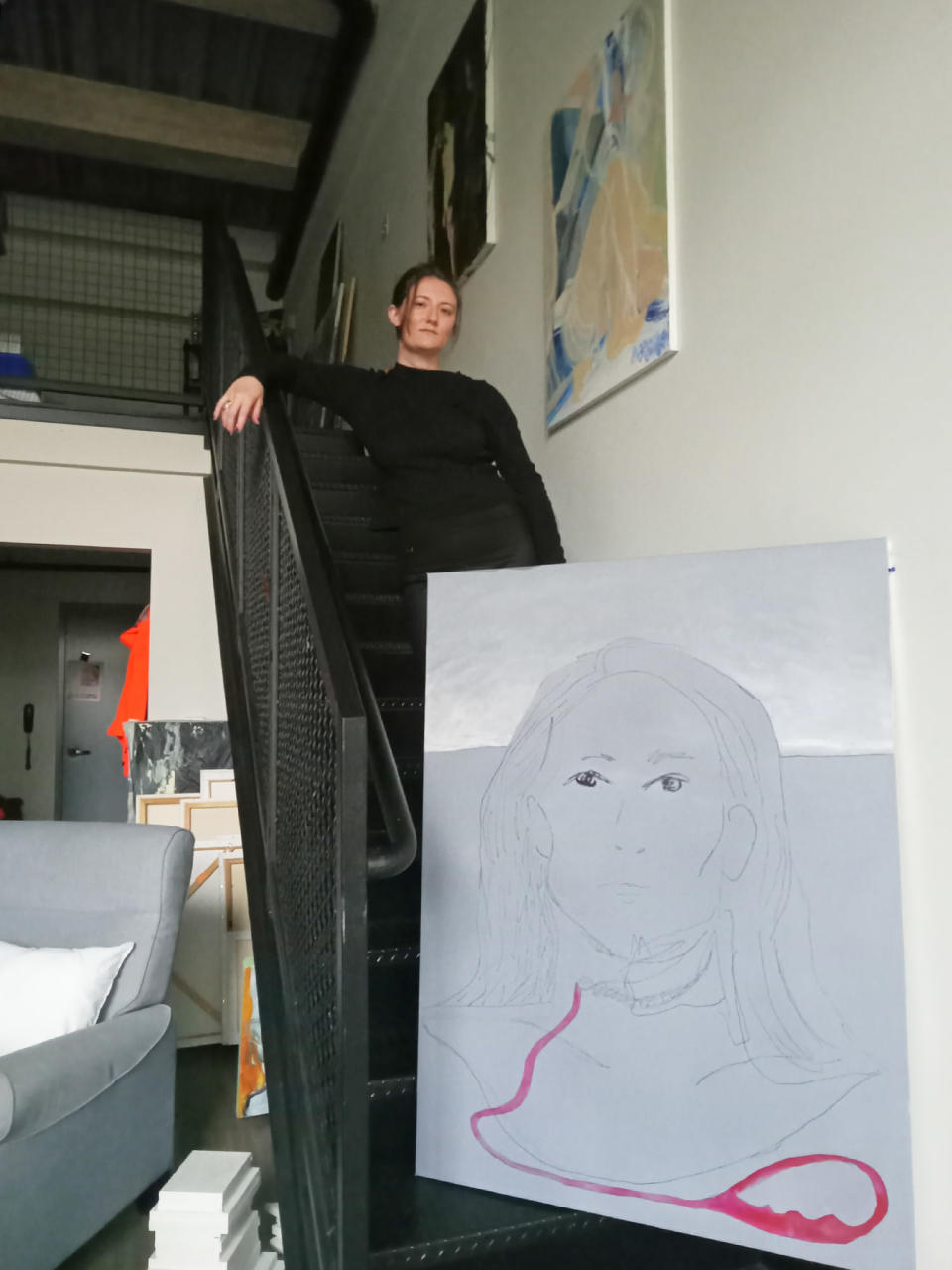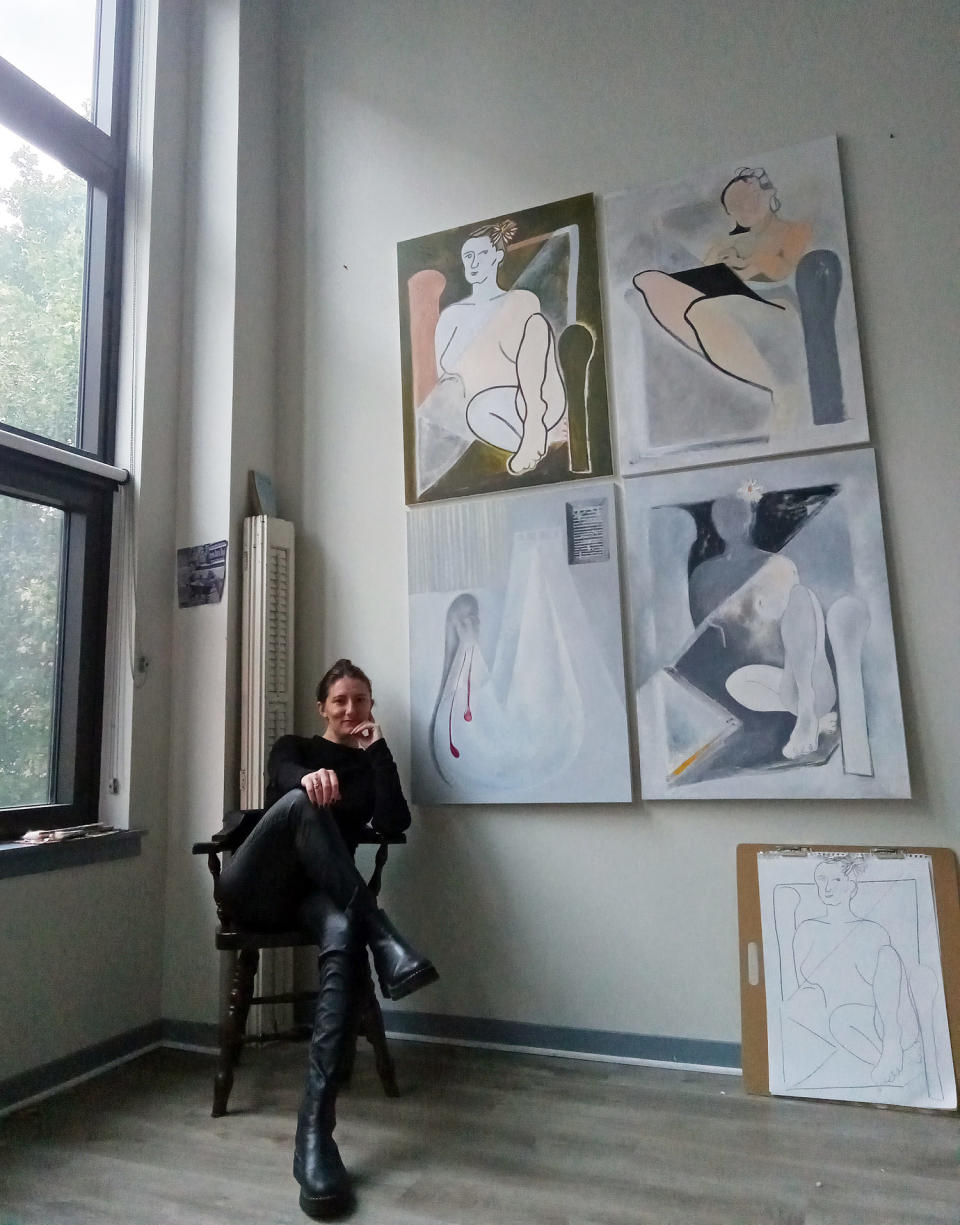Woman, 30, recalls how a Zoom call helped her catch her advanced thyroid cancer
When Nina Berlingeri, then 28, spotted a lump on the right side of her neck in December 2020, she thought a recent illness caused an inflamed lymph node.

“I actually dismissed that, unfortunately initially thinking it was just like a swollen gland from a cold,” the 30-year-old artist from the Hudson Valley in New York tells TODAY.com. “A couple months later in the spring I actually noticed (the bump) not only touch but also by sight.”She visited her doctor and learned she had thyroid cancer. She hopes her story encourages others to seek help when they notice a change in their health.
“(I want) to make people aware, to check with their bodies, to notice something going on,” she says. “I didn’t even know about this cancer until I had it.”
A lump that wouldn't go away
When Berlingeri first saw the bump, she assumed it was a swollen lymph node from an infection. Months later, she was in a class on Zoom and glanced at herself. That’s when she saw the lump again, and it seemed unusual.
“I noticed it was like a razor bump. It wasn’t protruding largely,” she says. “It looked swollen.”
Berlingeri went to see her primary care doctor and then a specialist soon after for a needle biopsy, which involved nine needles inserted into her thyroid and lymph nodes in her neck.
“I was nervous,” she says. “I was pretty distracted until the ninth needle and then I was like, ‘Oh s--- this is so gross.’”
A week later, Berlingeri learned why she had the lump. She had thyroid cancer. Her tumor was greater than 4 centimeters and had spread to the muscle in her neck and into some lymph nodes, Dr. Diana Kirke, one of her doctors, tells TODAY.com.
Receiving a cancer diagnosis felt difficult.
“I was shocked,” Berlingeri says. “It’s really treatable. The only thing was I was nervous because they were saying I was kind of young to have it.”
Berlingeri needed to undergo surgery to have her thyroid and impacted lymph nodes removed.
“During the surgery, Dr. Kirke found more (cancerous) material than she thought (was there),” she says. “During my biopsy, they were like, you just need surgery, you’ll be good. It would be very unlikely you would need anything else.”
Following surgery, though, Berlingeri learned she needed to undergo radioactive iodine treatment as well.
“I took a pill and I had to isolate for a week because I was radioactive,” she says. “I felt really low energy. It wiped me out.”

She also had to grapple with the psychological effects.
“Having to go through all this and keep your eye on the prize and try to get as much rest and relaxation despite what’s going on (was difficult),” she says. “I feel really lucky that I’m an artist and could do a couple of drawings and put this into my work. It really helped me process everything.”
Thyroid cancer
According to the American Cancer Society, approximately 43,720 people will be diagnosed with thyroid cancer in 2023.
“I would say that overall that the evidence shows that thyroid cancer is going up across all age groups,” Kirke, an otolaryngologist at Mount Sinai Hospital, tells TODAY.com. “We are uncertain as to why.”
While thyroid cancer impacts people of all ages, women are three times more likely than men to be diagnosed with it.
Thyroid ultrasounds are being performed more often than in the past, so the increased numbers could be due to more surveillance, but it could also be that there are simply more cases, Kirke says. Most people are like Berlingeri and receive a diagnosis because they spot a lump on their neck.
“The takeaway message here is that if you have a persistent neck mass for more than two weeks, it should certainly be further investigated,” she says.
Thyroid cancer responds well to treatment, Kirke explains, and most people undergo surgery to remove it. In some cases, surgeons take out part of the thyroid and leave some remaining. In more advanced cases of thyroid cancer, doctors remove the entire thyroid gland and often perform a neck dissection to remove the impacted lymph nodes, too. Some patients also need radioactive iodine.
“The survival rare, thankfully, is very good for thyroid cancer,” Kirke says. “The five-year relative survival rate is 98.5% across the board.”
Even though Kirke knows that patients have good outcomes, she understands that receiving a cancer diagnosis is distressing for people.
“It’s an awful thing to live with,” she says. “It does require lifelong follow up.”
Patients who have their entire thyroid removed need to take a synthetic thyroid hormone for the rest of their lives, too, and they often work closely with their cancer doctors and an endocrinologist to regulate their medication.

Recovery
For about a year, Berlingeri visited her endocrinologist for adjustments to her thyroid medication as her body changed to living without a thyroid.
“It would be like I was starting to feel leveled and then my energy would just be like drained, drained, drained,” she says. “It was an up and down and pretty challenging after going through all that.”
These days, she feels great.
“Once it stabilized, I’ve been in the clear,” she says. “It was just a matter of being aware of my energy levels and really connecting with my own body and understanding it and getting to know it better than I ever had.”
Every six months, she returns for a routine checkup to make sure that the cancer hasn’t returned. This experience has helped her connect with a different side of herself.
“I had to have a lot of patience with myself, slowing down and allowing that healing process,” she says. “I really had to get acquainted with the more patient side of myself.”
She’s returned to working as a commercial artist and made a surprising discovery.
“It feels really good to be working ... and using my muscles and getting my strength back. I’m probably in the best shape of my life,” she says. “Something I would for people to understand … life could be so much better once you get through all this. You can really have a nice, healthy enjoyable lifestyle.”
This article was originally published on TODAY.com

